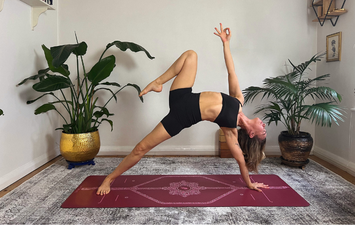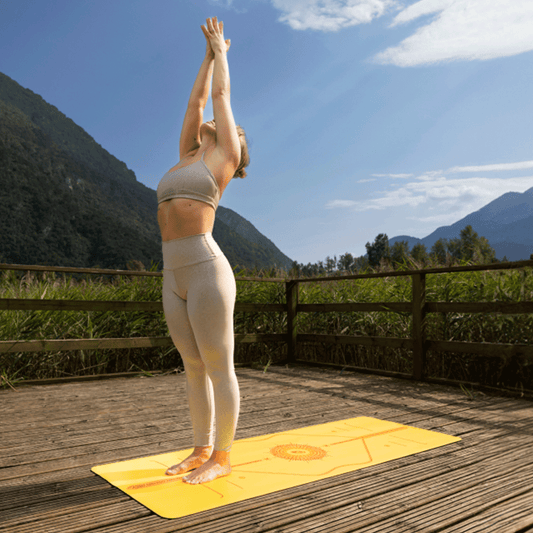AKA How to Do Nothing with Attention
Savasana is often described as one of yoga’s most difficult poses, but not not because it requires strong biceps or flexi hamstrings. This isn’t a foot-behind-the-head kind of situation; its difficulty instead stems from the mental challenge of doing nothing with your body while keeping your mind tranquil and aware.
During yoga asana practice, we become quite proficient at focusing our attention on the physicality of our poses. Doing a series of yoga postures in an alignment-focused way gives our busy little minds plenty to occupy themselves. It’s one of the great pleasures of any movement practice: a break from the mundane chatter of everyday concerns for our active brains. When we’re focused intently on whether our feet are properly distanced, if our thigh is parallel to the floor, and (constantly!) unhunching our shoulders, not to mention the overwhelming power of the sensations caused by exertion, our monkey minds can’t help but quiet. But what happens when the body stops moving and comes to rest?

For many of us, it doesn’t take long for the little monkeys to resume their activity. That’s the challenge of Savasana: maintaining a clear mind when the body goes still. In many ways, it’s what we’re all working toward. Taking a rest when the body has been wrung out and we’re still fresh from our mental break teaches us how to observe our thoughts rather than embody them. It’s practice for meditation and life.
Savasana is also an important ritual in a yoga class. It. It marks the end of an intense communal physical experience. It puts you in a vulnerable position in a group setting, which builds trust. It also requires you to accept a short period of rest and inactivity after your practice. When you do yoga at home, you may find yourself skipping Savasana because it doesn’t seem appropriate for busy adults to lie down in the middle of the day. Being compelled to take a rest with a class is a bigger deal than it first may seem.
Savasana Benefits:
Trains the mind for meditation.
Resting the body after practice helps it absorb the effects of its activity.
Prepares you to transition back into your day.
Savasana Etiquette:
Do not even think about leaving a yoga class before or, potentially even more disruptively, during Savasana unless it is the most dire of emergencies. The class ends after the group final relaxation, the closing chant (if applicable), and the namastes, even if it’s running 10 minutes late.

Instructions:
Corpse Pose is usually the very last position in a yoga session. If you are at home, turn off the lights and set a timer for at least five minutes.
- Come to lie on your back on your yoga mat. Separate your legs and let your feet open out. Distance your arms a few inches from your body and turn your palms to face the ceiling.
- Close your eyes. Allow your body to feel heavy, as if it were sinking into the floor. If it’s hard for you to let go, you may find it helpful to scan your body, starting with the toes and working your way up, releasing each body part as you go.
- Breathe naturally. As you find thoughts arising, notice them but don’t engage them. Stay relaxed but awake.
- Stay in this the position for 5 to 10 minutes, or until your teacher brings you out of the pose.
Useful Savasana Props:
A rolled-up blanket or a bolster under your knees can help bring your lower back into a more comfortable position.
If it’s cold in the room, cover yourself with a blanket or put on a sweater and socks.
It can feel calming to cover yourself with something heavy. Some people like an eye pillow. Placing a few folded blankets over your hips also feels anchoring.




































